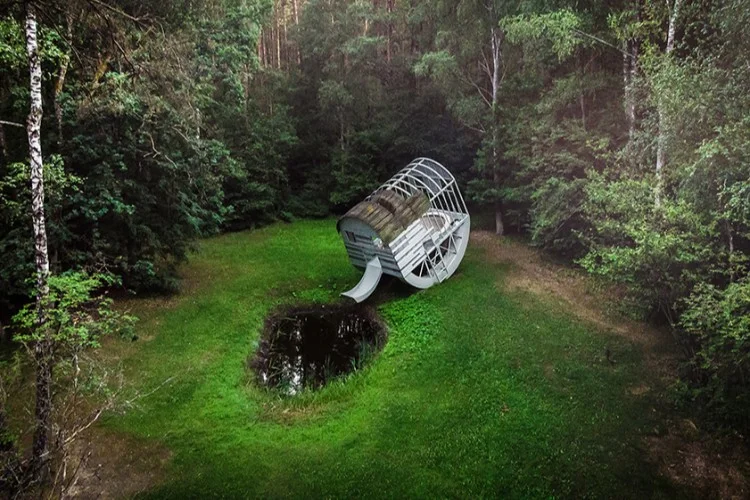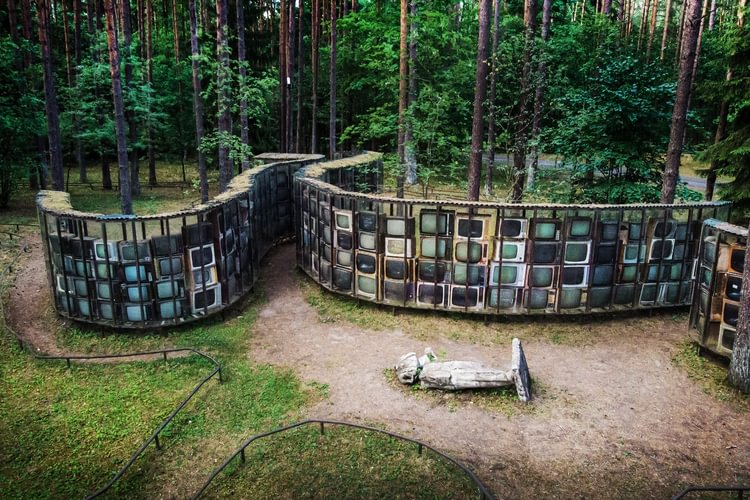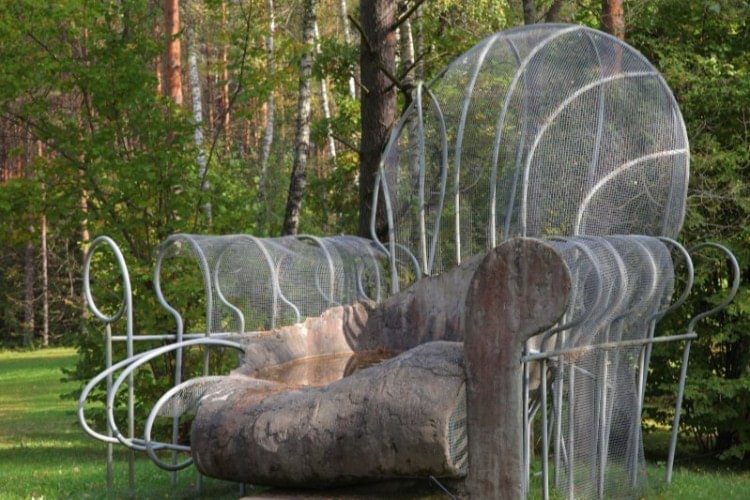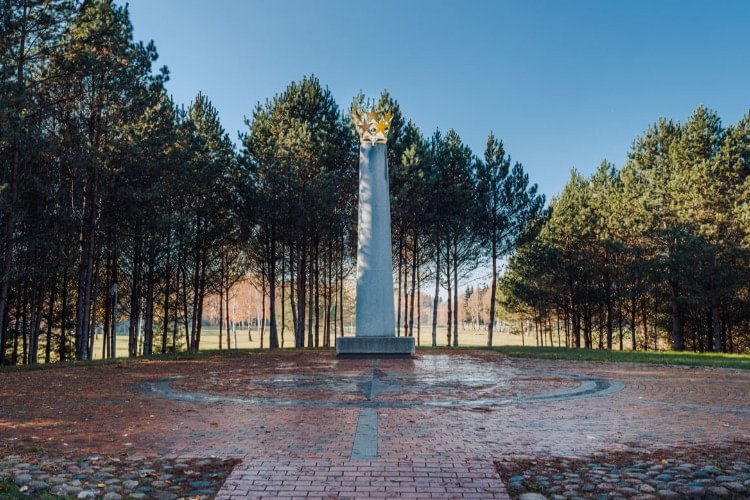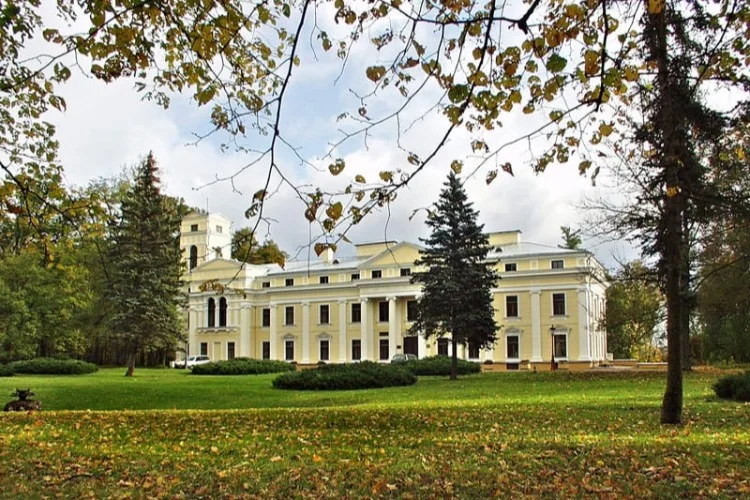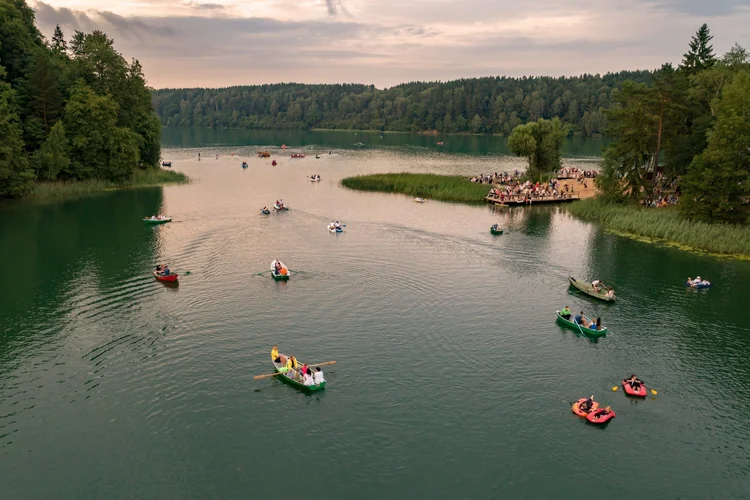Europa Park: an Art Reserve near Vilnius
Just 19 kilometres north of Vilnius, Europa Park is a completely different kind of open-air art gallery and a creative space like no other. It demonstrates the power of one person. The idea to create Europa Park and give special meaning to the geographical centre of Europe through art was born in 1991.
What started with one sculpture by 19-year-old art student Gintaras Karosas has now grown to more than 130 installations and works of art. It takes hours to explore the 55-hectare property filled with art thoroughly, so get ready for a perfect day-trip.
Harmony Between Art and Nature
The area has forests, meadows, hills, and ponds that make for an interesting walk alone. But nature is complemented by art here, so you can never really know what awaits you at the next turn. Maybe it’s a six-metre woman or some tiny stones.
The location of each work of art has been chosen to create a harmony with the surrounding trees, flowers, and daily patterns of lights and shadows. Even the Education Centre seems to be created by nature; the roof of the building is covered in grass and resembles a mound.
A Guinness World Records Holder
Imagine a 700-metre labyrinth in the form of a tree created from 3,000 old televisions and a decaying statue of Lenin at its centre. The LNK Infotree by Gintaras Karosas was included in the Guinness Book of World Records as the world’s largest work of art in 1999. The 150-tonne monument shows the futility of propaganda spread on TV.
Look for Famous Artists
The idea of having Europa Park serve as a European art reserve spread quickly, and several famous artists have joined the movement and contributed their own artwork. Artists from 34 countries have contributed to the park.
Look for the most popular sculpture, Chair Pool, by American artist Dennis Oppenheim; spot the 22 concrete boulders by Magdalena Abakanowicz, called Space of Unknown Growth; try to solve the mystery of the four granite blocks seemingly suspended in the air by Jon Barlow Hudson; and Check out Voices Underground by Patricia Goodrich, a multimedia presentation that includes wildflower seeds and flowering bulbs planted on a 300-square-foot site.
The exhibition grows every year as the park hosts an annual International Sculpture Symposium as well as international artist-in-residence programmes twice a year.
Check Out the Centre of Europe
When you go out to visit Europa Park, make sure to take a little detour to the geographical centre of Europe. In 1989, the French National Geographic Institute determined that the geographical centre of Europe is indeed right here in Lithuania, 26 kilometres north of Vilnius.
A nine-tonne white granite column topped with a crown of stars marks the place surrounded by meadows and forests. Come and you’ll be able to boast about your trip for a long time to come.
You can even get a special certificate stating that you’ve visited the Geographical Centre Point of Europe.
Visiting the Verkiai Park and Palace
Take in the astonishing panoramas of Vilnius from above at Verkiai Park. While you’re there, visit the location of a former pagan shrine, take a walk in an old forest, and see the 18th-century mansion. The palace interior has been renovated according to its authentic historical appearance, so it’s worth paying a visit and exploring its sophisticated halls.
Taking a Dip at the Green Lakes
On your way to Europa Park, stop by the famous Green Lakes (Žalieji ežerai) for some boat rowing or swimming. The surprisingly green water is a result of vast amounts of carbonates in the groundwater that feeds the lake.
Getting to Europa Park
By bus: Take bus No. 66 from Žalgiris bus stop in the direction of Skirgiškės (Europos parkas). The timetable is available here.
By car: From the centre of Vilnius go along Kalvarijų Street to the Santariskės roundabout, turn right and follow the Europos Parkas 11 km road sign, which will lead you to the park.
By bike: If you’re a more experienced cyclist, feel free to jump on your bike and cycle along the Neris River to the Green Lakes and Europa Park. Do keep in mind that you’ll also need to cycle back to Vilnius. The distance may vary from 30 to 60 km, depending on the roads you choose.
The park is open from 10 a.m. until sunset. Admission is EUR 11 for adults, EUR 8 for students and seniors, and EUR 6 for school children. A 20% discount is offered with the Vilnius Pass.

